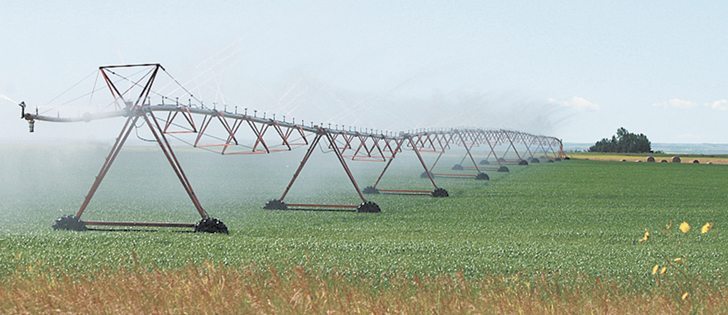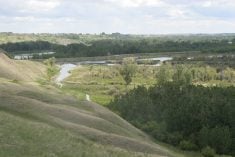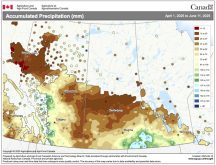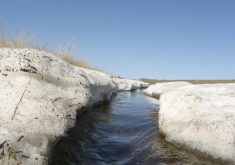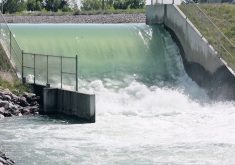A new report finds the province’s irrigation industry contributed $3.6 billion to GDP and $2.4 billion in labour income
Water makes things grow, which is exactly what it has done for Alberta’s economy, according to a 2015 report on the value of the province’s irrigation systems.
The one million acres under irrigation generate $1.4 billion in direct sales of crops and livestock. It means 4.7 percent of the provincial cultivated land base generates 19 percent of total provincial sales.
Brent Paterson of Paterson Earth and Water Consulting compiled the study and shared key findings Nov. 25 with those attending the Alberta Irrigation Projects Association water conference.
“Alberta’s irrigation industry handily generated about $3.6 billion to the provincial GDP, $2.4 billion in labour income and about 56,000 jobs,” said Paterson.
Read Also

Farming Smarter receives financial boost from Alberta government for potato research
Farming Smarter near Lethbridge got a boost to its research equipment, thanks to the Alberta government’s increase in funding for research associations.
“In terms of agricultural processing, irrigation related agricultural processing generated about $2 billion total sales, which is about 18 percent of the total provincial processing sales. Irrigation related processing provided about $1.7 billion to the provincial GDP, $1 billion in labour income and about 17,000 jobs.”
The study examined data from 2000-11 and assessed irrigation’s impacts in terms of direct and indirect effect, processing, recreation, hydro-electrical production and habitat.
Paterson told the AIPA that figures show production on irrigated land was seven times higher than on dry land in the 10-year period under study.
“It’s important to recognize that was a time frame, 2000 to 2011, was one of the wetter time frames that we’ve seen in a number of years, and so the crop production in terms of dry land was actually higher than perhaps you would consider on an average basis,” he said.
“So I’m thinking we’re being somewhat conservative in terms of our analysis.”
Every cubic metre of water delivered through the irrigation system generated $3 to the province’s gross domestic product and $2 in labour income, according to study data.
Climate change could allow more crop diversification and higher yields and also attract more food processors to the region, but models indicate summer water flow in rivers is likely to be lower.
Models also suggest more precipitation and runoff may occur in winter, when irrigation districts are not typically capturing water.
“I think that’s going to be a real challenge for the irrigation community,” Paterson said.
He said more water storage and a long-term drought strategy would be in irrigators’ best interests because drought intensity and duration may increase as the climate changes.
The full report, Economic Value of Irrigation in Alberta, is available on the AIPA website at www.aipa.ca.
Contact barb.glen@producer.com




